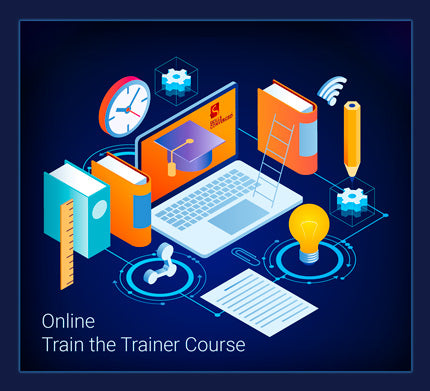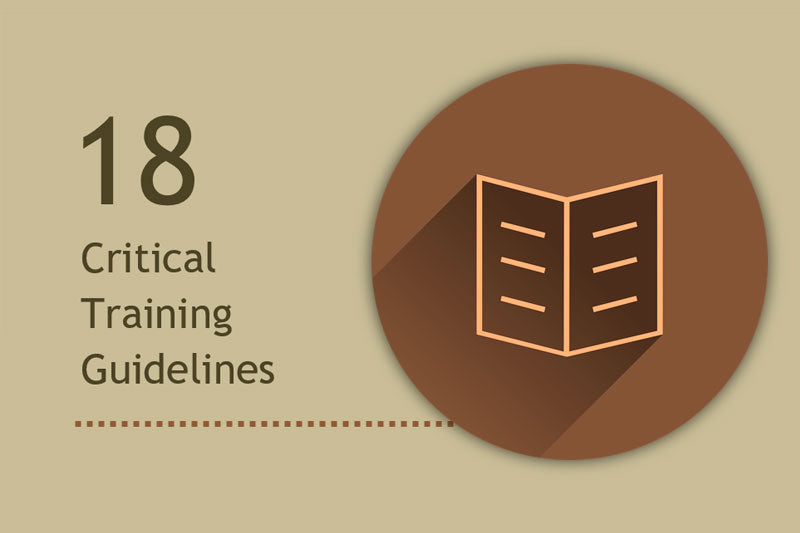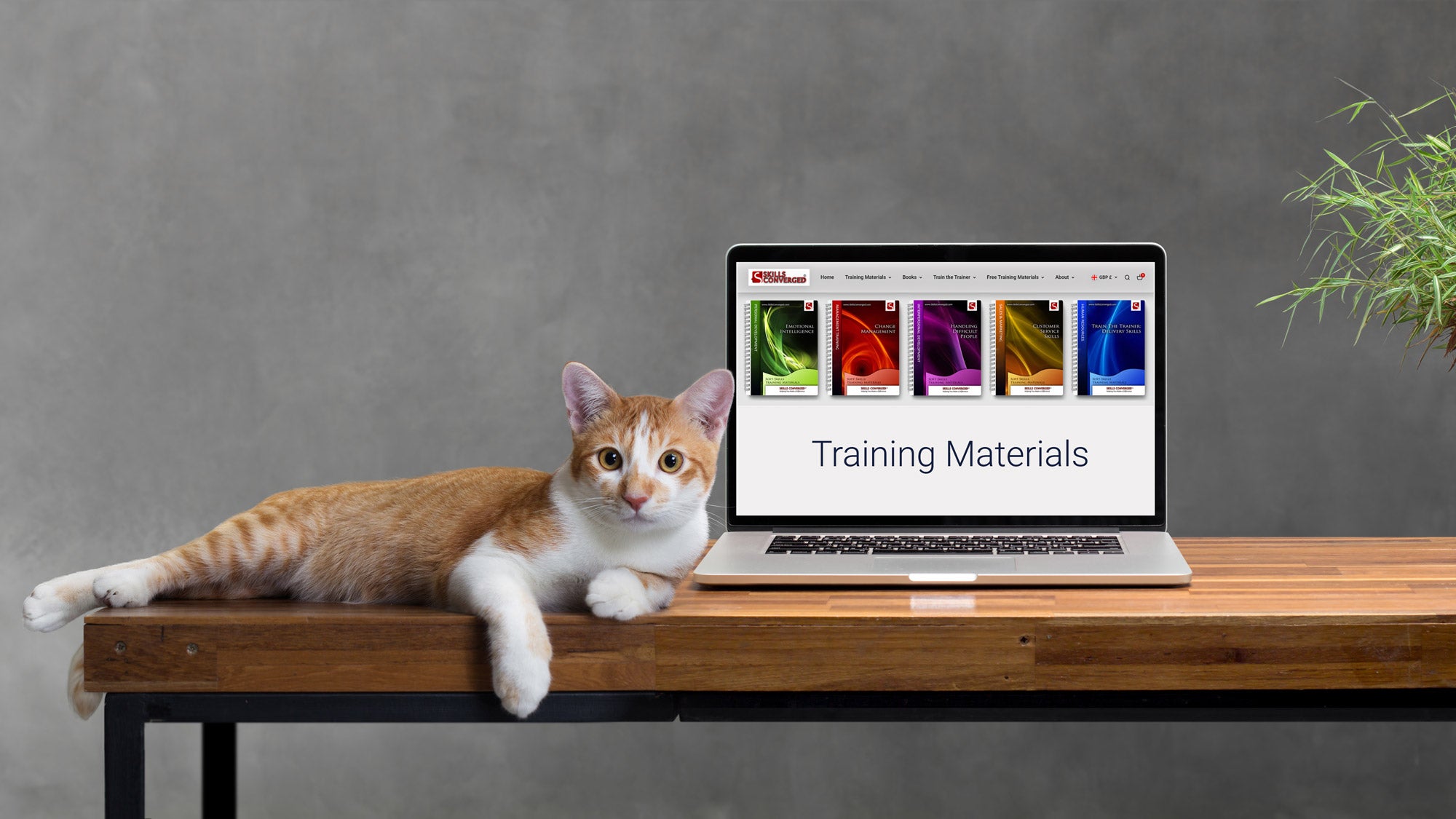We all want to be good teachers. In life, eventually you are going to acquire enough knowledge about some topic that you will become an expert at it. Being good at a skill, you may then find yourself in a teaching position; either in the form of coaching or in a more formal setting like delivering a training course. Either way, knowing how to teach well is a key skill worth mastering.
In this article, I have compiled a set of practical training guidelines that I hope everyone in a teaching position learns and masters by heart. I have designed it to be a compact set of important actions that you can easily focus on and become proficient at.
On Compilation of the List of Training Guidelines
Knowing a lot about a topic or mastering a skill doesn’t mean that you are also good at teaching them. Unfortunately, many think that following a simple blanket process makes them qualify to teach or train people. This, in reality, leads to bad teaching, poor performance and ultimately negative feedback from your students.
While putting this guide together, I have aimed to keep the list condensed and only include the most important guidelines. I didn’t want to end up with 125 guidelines and tell you to learn them all when I know it would be very difficult to stay aware of such a long list of concepts. Instead, I have shortened the list while keeping every critical training guideline in it.
I have numbered the guidelines to make it easy to reference them. For each guideline I have also provided a section with a series of questions on rating yourself. After each training delivery, revisit this guide and rate your performance based on these questions. Go through each guideline and ask yourself, “How well did I do for this?”.
There is always something you can improve on for each guideline. Write a list of actions and make sure you DO them.
I know for sure, that if you follow these training guidelines you will end up delivering great courses. The problem, as always, is lack of awareness of key concepts. In the heat of delivering a training course, they are easy to forget. This is why in my online train the trainer course, I repeat key concepts several times, in different ways, and make students practice them over and over again. You must apply key concepts repeatedly until they become a habit. They must become muscle memory. This will then free up your mind to focus on your delegates rather than how to train them.
I hope this guide helps you master these training skills. Happy training.
Guideline #1: Knowing a Great Deal About a Subject Is Not Enough to Make You a Good Trainer
I have seen this often: people fall in love with a topic and want to learn as much as possible about it. They learn every obscure fact about the topic. They have extended geeky discussions in a corridor with other fellow enthusiasts and eventually end up with a body of knowledge, strong opinions on how things should be done and what the future of the field looks like.
All good so far, but I am afraid this is not enough to turn you into a good trainer.
In fact, I would go on to say it can be detrimental if you are not self-aware. Training is a different skill. Knowing a lot can give you a false confidence that you are also great at training; just because you have a lot in your head doesn’t mean you can efficiently transfer them to others.
Because good training is all about efficiency; maximising transfer of skills in a given time while making sure it sticks for as long as possible.
In reality, students don’t care how much you know; all they care is how much you can teach them, and how much they can get from you. It doesn’t matter if you are the Einstein of the field (although it helps), if they cannot understand a word you say or you don’t bring yourself down to their level when teaching, then your expertise won’t matter to them.
Rate Yourself for Your Training Delivery
How much time are you spending on learning about training and teaching?
Do you self-coach?
Are you getting coached by other experienced teachers or trainers?
Are your teaching skills improving over time or are you teaching the same old way you have always taught?
Guideline #2: You Need to Create a Safe Training Environment Where Delegates Can Make Mistakes
Suppose a student makes a mistake. The trainer punishes the student in front of everyone to demonstrate what not to do or say. What do you think happens next? Resentment, resistance and negative feedback on your poor training skills.
Demonstrate clearly that it is ok for delegates to make mistakes during the learning process. They are allowed to ask questions; however silly they may sound. Failure should never be laughed at or ridiculed.
You must respect all reactions to your content, good or bad. Think and act like a persistent parent with limitless patience teaching a child.
You should never express, or even think in your head, that some skill is beyond a student’s capability by nature. You are almost always wrong if you do, because people learn differently and a student that may appear slow to you could just have a different way of learning. You would be surprised to know how often students who are slow in the beginning end up being the best in the class.
Rate Yourself for Your Training Delivery
Did any of your delegates express themselves without fear of ridicule? How did you react?
What did you say or do to show that it is ok for them to make mistakes?
How did you handle a situation when a student made a mistake?
Guideline #3: Engineer the Environment so That Learners Are Immersed in the Learning Activity Without any Distractions
It is so important to minimise distractions at an age where everything shouts for our attention. Be ruthless in eliminating bad behaviour as it is highly contagious. All you need is for one person to reach out for their phones and soon everyone is doing it, with the inevitable loss of concentration for many.
They are adults, sure, they should know better, but you must act like a caring parent; be firm while exercising tact. Focus on end results, not scoring points or showing who is the boss. While they are learning from you, show that you are in charge and they must therefore follow your rules; distractions are not allowed in the learning environment.
Design a suitable learning environment. Fill it with content, posters, images, props, tools and materials related to the learning activity to immerse the delegates in the topic.
Rate Yourself for Your Training Delivery
How much the training environment contributed to learning? How can you increase this?
How did you manage distractions?
Guideline #4: Great Trainers Transfer Their Enthusiasm and Goal-Oriented Learning to Their Students
The biggest difference between a great trainer and a good trainer is not the depth of their knowledge, but their enthusiasm about the topic and in teaching it.
This enthusiasm is contagious.
Don’t hold back. Share what you think is amazing. Get your delegates excited. Illustrate the future of the field as you see it. Share your vision. Help them see what goals they need to set for themselves. Show them how they can get recognition for their hard work.
Show the way as you would have liked to be shown by your teachers when you were learning the craft yourself.
To motivate your delegates, you must understand what motivates people in general and how to apply this to a training environment. Always remember the 4 powerful strategies you can use to motivate your delegates.
Rate Yourself for Your Training Delivery
Were students excited about the topic you taught?
Did you share a story with them that they felt was impressive and made them more interested in the topic?
Did you give them an opportunity to try out the techniques or use the tools and experience the joy of doing something new?
Guideline #5: Establish the Need: Let Delegates Know What They Will Learn and Why
Nothing can be more detrimental to adult training than not Establishing the Need on why delegates should learn something. Adults need to know why they need to learn, or they will not commit.
Despite its extreme importance, many trainers still fail to appreciate this. They will embark on teaching without saying why they are teaching it, or what it is good for. Delegates either resist training or lose interest, get distracted and switch off.
It is also very useful for your delegates to know what is important in a given field. By stressing this and spending more time on it, you teach them what they need to focus on and what to master.
If you are curious to learn more about how to systematically Establish the Need at the beginning of the course and any session, have a look at my online train the trainer course where I cover this extensively along with examples and exercises. I consider this to be the nucleus of any course structure sequence.
Rate Yourself for Your Training Delivery
Did you go through a sequence at the start of your session or every time you wanted to cover a new topic to establish the need?
What are the most important topics to cover in the course? Did you spend more time on these important topics?
Did you let your delegates know why learning about a certain topic was useful and what they could do with that skill in their world?
Guideline #6: Teach as if You Cannot Get Enough of Teaching
We teach others the way we learn. The way you feel about something comes across. It is therefore crucial to know yourself, to understand your delegates and know their needs. Teach as if you don’t want to be anywhere else but there to teach them.
If your topic is in general uninteresting, find something in it that is. If you cannot find it, invent it.
Rate Yourself for Your Training Delivery
In your last course delivery, did you feel you could not get enough of teaching?
Did you feel you were doing the teaching for the money?
How much did your delegates enjoy the course?
Guideline #7: Don’t Teach Everyone the Same Way; Apply Learning Styles
People learn differently. Don’t teach everyone the same way, usually in a way that you like to learn yourself and expect everyone to learn. You must consider learning styles. There are many formal systems and it is up to you which one to use. Either way you must always be aware of different needs. See some examples of learning styles.
Rate Yourself for Your Training Delivery
List various systems you used while teaching that appeal to different learning styles. Do you cover all styles?
Was there as group of delegates with a specific pattern of behaviour, i.e. a specific learning style, that struggled with some topic? How would you approach this next time?
What is your learning style? Did you teach mostly the way you learn?
Guideline #8: Aim for Clarity; It Is Not Always Possible to Simplify the Subject
Some topics are complex. Teaching them is not a matter of explaining something in a couple of sentences. If you want to teach about backpropagation algorithm in neural networks, how SCRUM framework is used or how to mix any colour when painting then you may not be able to explain everything in one go.
A good trainer should break complex topics into smaller parts and focus on simplifying them. If delegates struggle to get it, ask yourself how can you divide it to chunks, how can you explain it in easier terms, how can you use metaphors, analogies and the like to make it easier to understand.
Remember, clarity is more important than volume of content; there is no point covering too much and leading to information overload.
Break content, simplify and clearly state them.
Making things simple is not always possible; plan ahead, anticipate, and adapt based on previous course deliveries.
To make it clear, you should consider providing examples as teaching by example is incredibly powerful.
What you should never do is to imply that if delegates cannot understand something, then it is beyond them, or it’s not worthwhile, and you are going to skip it because you cannot spend your precious time on it! Adults will be outraged with this.
It is never their fault if they don’t get it, it is always yours.
EXMAPLE:
Here is an example. As a student, I attended a course on mechanics. The lecturer wanted to teach about “torque”. I expected him to start with Newtonian physics and cover the math one formula after another, as was the norm with many other lecturers. This was always very abstract and hard to follow.
This lecturer however, had a completely different approach. He brought with him a single wheel of a bicycle. He spun the wheel around while holding its axis and explained exactly what happens to various forces as the wheel spins. You could see what the centrifugal force was doing as well as gravity. You could learn quite visually what torque meant. He then used the same analogy to explain how torque was applied to a satellite in orbit. It was fascinating. I learned the concept so well that after a couple of decades I still remember this single lecture very well.
Such is the power of simplification and creative teaching, and most often, it doesn’t cost a lot more to do it. You don’t need sophisticated equipment. You can get a lot done by just asking yourself a simple question: “How can I make this easier to understand? How can I make it more interesting?”
Rate Yourself for Your Training Delivery
Was there any topic that took you longer than you anticipated to cover? What can you do to make the teaching more efficient?
Did you present complex topics in different ways to appeal to all learning styles?
What props, materials, gadgets or custom tools can you use to make teaching key complex topics easier?
For any complex topic, ask yourself:
- “How can I make this easier to understand?”
- “How can I make it more interesting?”
- “How can I make it clearer?”
Do you have some students that struggle with a specific topic? If so, how can you simplify the topic?
Guideline #9: You Should Always Know What Topics Are a Priority to Learn
Don’t waste time covering topics raised by delegates that are out of scope or unrelated, no matter how much fun they are to talk about.
Before the course, identify your key topics or risk running out of time covering them. Let’s remember this with an analogy often used in time management.
Suppose a jar represents your total time and you want to fill it with stones and sands which represent your content. Key topics (or what I call “aha moments”) are much like “key stones”. The large stones (key learning points, critical assessed lessons, etc.) cannot be taken out, shrunk or ignored. You must include them all in the course. So, you should put them in the jar first to make sure they will fit. The rest of the space in the jar can be filled up with sand (unrelated topics, side topics, random discussions and non-critical topics).
You should only fill up the jar with sand after most key stones are already placed inside You don’t want to fill up the jar with too much sand too early only to realise you have ran out of space (or time) for some key stones (topics) that you wanted to include.

Rate Yourself for Your Training Delivery
Did you prepare a list of core topics that must be covered and understood?
If someone asks you, “What are the three critical lessons, concepts or skills you consider crucial in this field?”, would you be able to state them in a heartbeat?
You cannot teach everything in a given time. You have to make a choice. Did you drop topics at design time to make sure you can focus on critical topics?
Guideline #10: Repeat Key Learning Points
Humans must repeat to learns. It’s just the way our brains work. Don’t expect anyone to learn without repetition. As you go through the course, repeat key points three times. Let them hear it, help them process it, and repeat again so they understand it.
REPETITION IS KEY
HEAR
PROCESS
UNDERSTAND
When you repeat, repeat in a different way every time. You don’t want to bore them by going over a point in exactly the same way. This also helps you express it differently and appeal to different learning styles. Read more on why repetition is important in training.
Rate Yourself for Your Training Delivery
Did you prepare a set of key points before the course so that you knew what to focus on?
Did you repeat key learning points three times?
Guideline #11: Don’t Be a One-Way Source of Information: From You to Your Delegates
Here is a great test: Are your delegates only learning from you?
If yes, then you are missing a great chance. You must get them to learn from each other too.
For each delegate, treat teaching as a triangle between you, the delegate and all other delegates. All sides of the triangle must be active for everyone while you teach. This requires “engineering and design” from the outset. You must think of running exercises, group activities, discussions and conversations so that you are not the source of all information. For a comprehensive guide on how to make your training courses more interactive, see how to apply experiential learning.
Rate Yourself for Your Training Delivery
Did you talk most of the time in your course? If so, how can you rectify this?
Did your delegates have a chance to interact and learn from each other?
What strategies can you employ so that you won’t be the source of most information they receive?
Guideline #12: Keep Asking and Leading; You Will Never Risk Overdoing It
One of the great ways to keep delegates engaged is to ask questions. I cannot stress this enough and in my experience, this is what most trainers struggle with.
You are not asking questions to get a yes or a no. Your aim is to force them to think and to stay engaged.
This helps you avoid being a one-way communication channel too. The answers help you understand what delegates know and what they need more help with. This in turns helps you provide a dynamic training based on their needs. You cannot be scripted from beginning to end. When you ask questions you need to react to the answers you receive. You may need to correct them, expand on something, reinforce an idea or even explore a side topic they are interested in.
You must teach your students HOW to think not WHAT to think.
Rate Yourself for Your Training Delivery
What percentage of your entire course consists of asking questions or soliciting interaction while teaching? Aim for 30-50%.
Guideline #13: Asking Helps You Stop Talking and Start Listening
When you ask questions, you need to stop and listen. This simple yet powerful training guideline will help you on many fronts:
- You cannot lecture if you have to ask. You need to pause and listen to answers.
- Reduces risk of being monotone or putting delegates to sleep.
- Encourages delegates to think and respond.
- Keeps delegates engaged; they don’t want to miss the next question.
- You can see which delegates are paying attention and which ones are not. You can then address this accordingly.
- You can see if many are struggling with area or concept. This prevents you from jumping from topic to topic and leaving some delegates behind.
- Asking helps you stop, reassess your speed and approach and make sure everyone follows you.
- Listening shows you care. It helps with developing trust and rapport.
- A trainer that asks questions and leads always comes across as more credible and experienced. This is because asking questions while teaching is hard and people know it.
Rate Yourself for Your Training Delivery
Did you listen to delegates? How often?
Did you know what delegates needed, what they knew already and what they were struggling with? You cannot know all this unless you ask questions and stop lecturing.
Guideline #14: Carefully Plan What to Ask and How to Lead BEFORE the Course
You must prepare a series of leading questions before the course because it is very difficult to come up with them on the spot.
Identify complex problems and divide them into smaller chunks. Next, formulate a series of leading questions to lead delegates from one topic to another so they understand the whole concept. Use the same approach when you need to help them have a mind shift and start thinking differently about a given topic.
Rate Yourself for Your Training Delivery
Did you have a list of prepared leading questions before the course to help you lead delegates as you explained complex topics and concept?
Did you have a prepared set of answers for these questions to know what to expect when you asked them?
Guideline #15: You Must Train Yourself to Read Your Delegates and Respond to Their Needs
You cannot teach in a prescribed way. Stay dynamic and change your style based on the needs of your delegates.
For this, you must listen, look for signs to see what they need and try to adapt to these needs.
If something is not working, you must do something else; you can’t be doing the same thing and expecting different results.
Let’s say you cover a topic. It is not overtly essential but it’s a good-to-know topic. As you go through it you observe that some delegates already know about this topic and some others cannot be bothered as they are much more excited about other topics. You must then make a decision and adapt. You can move on to another topic rather than lingering on the current topic and alienating your delegates.
To know exactly what your delegates think of your training, you must systematically get feedback from them usually by getting them to fill in a form at the end of a course. Read more to learn how to design a course feedback form.
Rate Yourself for Your Training Delivery
In your last course, did you understand what your delegates liked? What topics they already knew about? What topics were they eager to learn more about?
Did you respond to these needs or did you follow the same pre-scripted training as you had planned before the course? What can you do in the future to be more flexible while still covering important topics?
Guideline #16: You Must Give Learners Enough Time to Learn; It Is Always Easier for You
Don’t get frustrated when a student doesn’t get it. I am sure everyone agrees with this but in practice we are susceptible to get frustrated when we have repeated something three times and a couple of students still don’t get it. Your frustration will come through your body language. This will not help with your training.
Be dynamic. Change your approach. Don’t repeat the same thing in the same way (possibly louder and with more frustration in your tone and body language) hoping that the students get it. They won’t; you only create resentment for the topic and for your teaching method.
When they don’t get it, think of new strategies:
Strategy #1: Get Delegates to Learn from other Students Who Get It
May be other students who got it can explain it in a different way that appeals to the struggling student.
Example:
- Design and use group exercises and encourage discussions.
Strategy #2: Use Different Training Materials, Tools and Props
Use a completely different method to teach, or obtain new training materials that can help you go through the content differently. For example, if you are teaching soft skills, you can consider a range of training materials we have on offer to complement your own.
Example:
- Suppose you are trying to teach how to draw an object in 3D with charcoal while making sure it has correct shadows. Some students struggled with this. In order to teach them, you assign these students a specific task: draw an egg placed in a black box with only one side open that is lit from only one direction. The student now needs to focus on a simple and clear lighting system and shadow shapes. By completing the egg drawing exercise, students will understand key concepts related to shadows such as a core shadow, a cast shadow, a terminator, reflected light, highlight, etc.
Strategy #3: Revisit Related Topics
Sometimes the reason a topic is not understood is because the student didn’t quite get the previous topic. You may have to step back and clarify it. This is all too common when teaching math. If a student doesn’t understand topic “C”, then go back to “B”, and if not, then go back to “A” until you reach a base when you are sure the student gets this topic. Now work your way forward form there back to the current topic.
Rate Yourself for Your Training Delivery
How rushed where you in your previous course?
Did you feel you have a lot of content and you had to jump from one to another?
Did you see any students struggling to keep up with your content? What did you do about it?
What can you do in the future to make sure no learner is left behind?
Guideline #17: Don’t Make a Big Deal Out of Unimportant Topics
Some trainers go crazy when covering a topic and spend ages on it when in reality is not that big a deal. This is done at the expense of other more interesting topics. Adults are very time conscious, especially these days.
Don’t waste their time covering obvious topics to death. Move on to the main topic swiftly. Inject the critical but boring and routine content into the more exciting ones to avoid spending a solid chunk of training on a boring topic.
If your teaching goes in from one ear and out the other, you might as well save yourself the time and trouble.
Cover the content piece by piece at a time when they can absorb it rather than making it easy for yourself and going through it in one go just to get it out of the way.
Rate Yourself for Your Training Delivery
How did your delegates react to your content? Were they bored or enthusiastic?
Did you spend enough amount of time on each topic based on how much they deserved, rather than convenience?
Guideline #18: Accept Weaknesses Gracefully; Don’t Sacrifice Trust
Some people think that being a good teacher means knowing “all” the answers. This is a damaging mentality. Sometimes the best answer is “I don’t know”.
You must preserve trust at all costs.
By accepting your weaknesses, lack of knowledge or simple mistakes, you reinforce the idea that you are truthful and trustworthy. This trust can help you immensely later on when you need it.
No one is perfect and anyone who pretends to be is hiding behind a mask that could be exposed at any time. The fear of being exposed can have a knock-on effect on your confidence.
When you tell your students that you don’t know but show that you are keen to know, you are telling them that you are still learning. This hunger for knowledge and acceptance of imperfection makes you look humble. It also helps you create a safe learning environment. If you can say I don’t know, so can they.
Rate Yourself for Your Training Delivery
Did you ever say “I don’t know” when running a course? Did you show that you cared about the topic and found out about it?
Did feel defensive when challenged for your views on a given topic? Did you react defensively too? What should you have done differently?
Did you fake your expertise or understanding at any time? Irrespective of whether you got away with it or not, what should you do in the future to make sure it is never repeated?
That’s it. This is the condensed list of all training guides you need to focus on to improve your training course. As I explained earlier, I have tried to keep the numbers down so that they are easier to review and memorise.
As you know, knowing is not enough; you need to be doing until new habits are formed. If you want to practice these skills in a controlled training environment and get coached on your performance, consider attending my Train the Trainer Course held in London and UK. The training evaluation will help you see which areas you need to focus on. I limit the course to 6 delegates and systematically go through the four main areas of training: method, setup, teaching and expression. You will demo a session and also receive a video critique. For more details and schedule please see the course page.

About the Author
Dr Ethan Honary is the founder of Skills Converged Ltd. A training consultant, researcher, author and designer with an aim to help trainers worldwide to improve training delivery and course design.
Table of Contents
On Compilation of the List of Training Guidelines
Guideline #1: Knowing a Great Deal About a Subject Is Not Enough to Make You a Good Trainer
Guideline #2: You Need to Create a Safe Training Environment Where Delegates Can Make Mistakes
Guideline #4: Great Trainers Transfer Their Enthusiasm and Goal-Oriented Learning to Their Students
Guideline #5: Establish the Need: Let Delegates Know What They Will Learn and Why
Guideline #6: Teach as if You Cannot Get Enough of Teaching
Guideline #7: Don’t Teach Everyone the Same Way; Apply Learning Styles
Guideline #8: Aim for Clarity; It Is Not Always Possible to Simplify the Subject
Guideline #9: You Should Always Know What Topics Are a Priority to Learn
Guideline #10: Repeat Key Learning Points
Guideline #11: Don’t Be a One-Way Source of Information: From You to Your Delegates
Guideline #12: Keep Asking and Leading; You Will Never Risk Overdoing It
Guideline #13: Asking Helps You Stop Talking and Start Listening
Guideline #14: Carefully Plan What to Ask and How to Lead BEFORE the Course
Guideline #15: You Must Train Yourself to Read your Delegates and Respond to Their Needs
Guideline #16: You Must Give Learners Enough Time to Learn; It Is Always Easier for You
Guideline #17: Don’t Make a Big Deal out of Unimportant Topics
Guideline #18: Accept Weaknesses Gracefully; Don’t Sacrifice Trust
Course Design Strategy
Available as paperback and ebook
Online Train the Trainer Course:
Core Skills
Learn How to Become the Best Trainer in Your Field
Train The Trainer Book
Available as paperback and ebook
Explore Topics
Longform Train the Trainer Guides
All In-Depth Articles
CPD Accredited
Online Train the Trainer Course: Core Skills
Learn How to Become the Best Trainer in Your Field
Full Course Details
How to Reference This Article
Honary, E. (2020) "18 Critical Training Guidelines That You Should Know by Heart", Skills Converged. Retrieved from: https://www.skillsconverged.com/blogs/train-the-trainer/critical-training-guidelines












Leave a comment
All comments are moderated before being published.
This site is protected by hCaptcha and the hCaptcha Privacy Policy and Terms of Service apply.